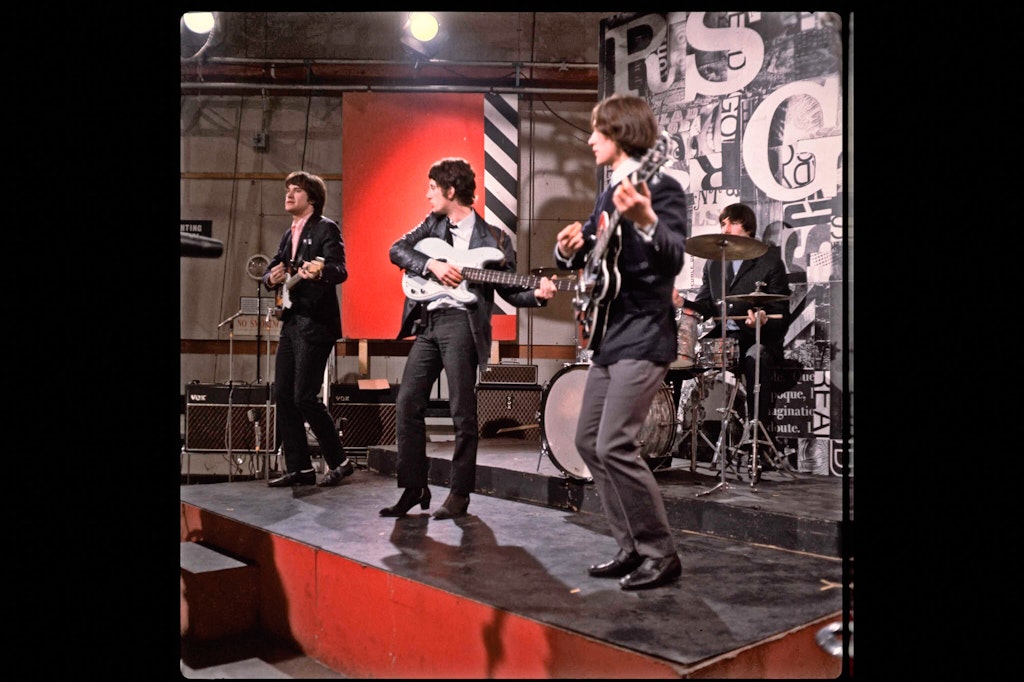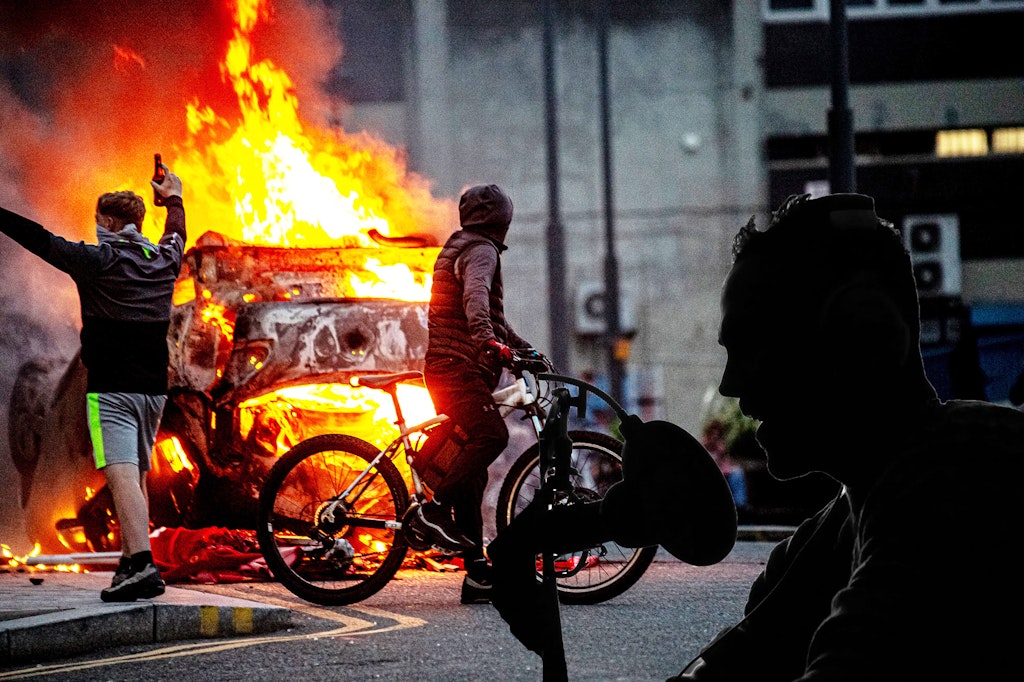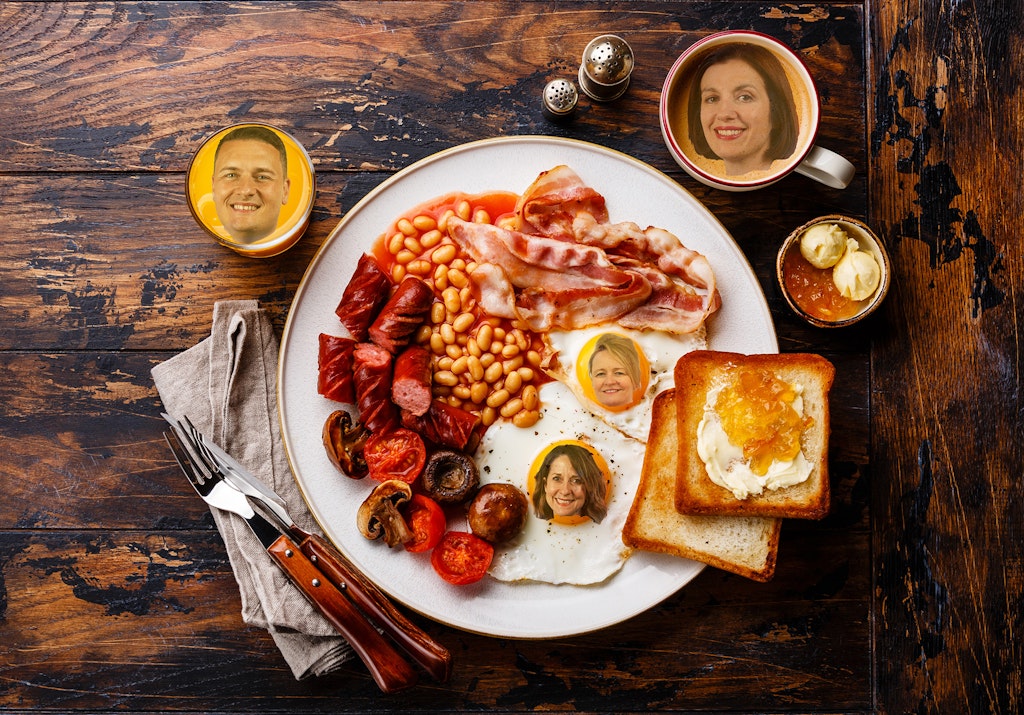Finding the middle ground
Where do the acts too big for pubs but too small for arenas play?
This article is taken from the April 2024 issue of The Critic. To get the full magazine why not subscribe? Right now we’re offering five issues for just £10.
Her sound is rootsy Americana: soothing, conversational songs with lyrics about hope in hard times and the magic of self-belief. Lady Nade (AKA Nadine Gingell) is a vocalist with more than a flicker of Nina Simone to her style. Gingell has a solid fanbase in the UK and US, which she earned, like Simone, through regular live performances in modest-sized music venues. Some artists suit venues that offer comfort with a sense of warm encounter, rather than cavernous stadiums built for digitally enhanced extravaganzas, or dank basements with questionable acoustics.
“I’m so happy to be here,” Gingell told the audience when she took to the stage in Bristol — her home city — late last year at the re-opening party for the Bristol Beacon concert hall (formerly the Colston Hall), after a £132 million, five-year restoration project by architects Levitt Bernstein.

The Beacon — with its concert hall that seats just over 1,800 people — is a significant, unusual and possibly risky investment, but it is not unique. Some funders are still backing mid-sized venues with architecture, interiors and technology that offer audiences an intimate sense of drama and occasion rather than a distant, digitally-enhanced spectacle or a crowded pub backroom, and a greater degree of comfort than a plastic bucket seat. But they have their work cut out to lure audiences, and they are hoping that architectural and design details will set them apart.
Take the ultra-modern, self-consciously angular Aviva Studios in Manchester, a £240 million project by Rem Koolhaas’ Netherlands-based Office for Metropolitan Architecture (AKA OMA), which opened last October. Or the forthcoming 4,000 capacity venue taking a distinctive shape behind hoardings in Hammersmith, West London, part of the £1.3 billion Olympia redevelopment led by the designer and “soulful” buildings enthusiast Thomas Heatherwick, scheduled to open from 2025.
Yoo Capital, the developers behind Heatherwick’s new concert space, hope the venue will be an alternative to stadiums for big stars, perhaps a place to play intimate, Las Vegasstyle residences over several nights.
Any new venues in city centres are rarities. According to Music Venue Trust (MVT), small and modestly sized halls are closing more frequently than they are opening. Last year was the hardest year for its membership in a decade — nearly 15 per cent were lost in 12 months alone, clobbered by high energy prices, rising rents, redevelopment and complaints from neighbours about noise, amongst other miseries.
Bush Hall in west London, an ornate Edwardian treasure with a standing capacity of 400, has launched a crowdfunding campaign to raise £42,000 to stay open. Its owners say they are “months away from making a hideous decision”. Contrast that with the 2.5 million tickets sold by London’s vast, anonymous O2 Arena, far out on the Greenwich peninsula (capacity 20,000) in 2023 — its most successful year to date, boosted by big-budget, stadium-filling acts such as Madonna.
Beacon Hall was built (or rebuilt) for artists like Gingell, established though no megastar, with its newly configured auditorium, warm timber panelling, lavish upholstery and crystalline acoustics. Its refurbishment, funded mostly by Bristol City Council, Arts Council England and the Heritage Lottery Fund, was over budget and a leap of faith. But so far, the signs are encouraging: ticket sales for its first three months of shows after reopening are up 30 per cent on the same period in 2017/18, the period just before it closed.

The 157-year-old concert hall was once one of Britain’s most significant music venues, with a strong history of hosting big-name American acts — Buddy Holly, Miles Davis, Bob Dylan — and British superstars such as David Bowie, as chronicled in a whimsical graphic mural in the bar by the artist Mel Northover. One highlight is The Beatles being struck by a flour-bomb on stage in 1964.
But times have changed. During the five years Beacon Hall was closed for refurbishment, the management team were particularly anxious about slipping off the circuit and their relationships with artists, promoters and its audience drifting away. “We were very worried about that — a huge question was, will anyone come back? And then a global pandemic in the middle of it,” says Louise Mitchell, chief executive at Bristol Music Trust, which operates the venue.
So the refit had to be world-class if they were to return, and the venue stave off the death-star effect of regional stadiums.The hall’s exterior, built in 1867, is all decorative brickwork, caramel-coloured stone and neoclassical colonnade, and it is grade-II listed. But the interior was just 70 years old, built to replace a structure that burnt down in 1945 though not hit by the Luftwaffe, more likely the victim of a discarded cigarette. (The former name related to its position on Colston Street: Edward Colston, the 17th century Bristol slave trader whose statue was toppled by protesters in 2020, had no connection to the concert hall.)
The old hall was close to collapse, with little overhead strength to hang modern lighting rigs. A seagull had set up home in a roof void in 2017, dislodging asbestos and closing the venue for three weeks.
“It was not very good at what it was trying to make money from,” says Mitchell. “Rock and pop, which cross-subsidises all the other work. We needed a venue suitable for all kinds of music. I was just grateful that we managed to get to closure in 2018 without a major building failure.”
As well as structural problems, the 1950s layout included a “killer acoustic issue” as Mark Lewis, the project’s lead architect, puts it: a single, deep balcony hovering above the stalls, whose bulk meant a chunk of the audience lost a sense of being enveloped by music from the stage. For them, the experience was something like listening to a distant megaphone.
So Levitt Bernstein kept the Victorian shell, removed its 1950s interior (though according to William Filmer-Sankey, a heritage consultant who advised on the project, the decision to do so was not taken lightly “given its architectural interest as a hall in the Festival of Britain style”) and built two tiers of balconies where previously there had been one, mimicking the layouts of the world’s great venues.
“We did some studies and looked at the Boston Symphony Hall and the Musikverein in Vienna, and we found the proportion of the Victorian walls in Bristol was very close,” says Lewis.

Manchester’s Aviva Studios was also wildly over budget — £130 million more than the original estimates made in 2015. Like the Beacon, it was mostly funded by the local council, Arts Council England, lottery money and, later, by the sale of naming rights.
But this venue is a much more complex proposition: two in one, a cathedral-sized warehouse with capacity for 5,000 people and an adjacent — and lavish — seated auditorium for 1,600, complete with stage and orchestra pit. The two are linked by acoustic doors, which open and close allowing the stage to deepen depending on the performance. “The warehouse represents the contemporary; the theatre references the traditional,” lead architect Ellen van Loon said at the opening event. “Putting them together takes it to another level.”
Its crab-like shape is self-conscious and certainly brash, though its confidence suits Manchester. Critics have quite reasonably complained about the ordinariness of the materials on the venue’s exterior: concrete, greyish corrugated cladding. “It had to be a reminder of [Manchester’s] industrial history so the materials we used on the outside are bog-standard,” concedes Van Loon. “It’s all quite simple.”
The public areas, too, are sparse, such as the underwhelming ground-floor bar and cafe area, with gloomy internal staircases. But the designers have poured money into the auditorium, with an audio system that tracks individual performers and a network of 60 speakers. Audiences sense from where on stage speech or music is coming, wherever they sit. The seats are generous and wide; the upholstery is luscious.
Whether all this bespoke detailing is enough to make the Beacon and Aviva Studios viable has yet to be proven. Both venues have competition. The Beacon may be the biggest in Bristol city centre, but seven miles to the north at Filton, a Malaysian investor is building a 19,000-capacity arena due to open in the next few years, describing itself as “the number one live destination for the South West”. In Manchester, the 23,500-capacity Co-Op Live — billed as “the UK’s only music-first arena” — opens this April.
Neither do mid-sized places quite offer audiences the thrilling immediacy and cheap ticket prices of a small gig venue. They may be struggling to survive, but more than 23 million people still went to gigs in them last year, according to the MVT, in a sector worth more than half a billion pounds annually (though Arts Council England’s new fund for supporting “grassroots music” is just £5m).
“Quite often, they are the first performances experienced by a young person,” says Mark Davyd of the MVT. Last year’s biggest loss, he says, was the beloved, 220-capacity Moles Club in Bath that shut in December, blaming soaring costs. The 45-year-old venue in a city-centre Georgian basement — sparse, chilly, famously damp — hosted Radiohead, The Cure, PJ Harvey and countless others in the early years of their careers.

“They contributed billions. So if the music industry can’t find a way to keep Moles open, we have a serious problem,” says Davyd. The trust has introduced a nascent scheme for a “National Trust of Music Venues”. Its first purchase was The Snug in Atherton, Greater Manchester, last year, a tiny venue with a capacity of just 100.
But cerebral artists such as Lady Nade will always need comfortable, mid-sized venues like the Beacon and Aviva Studios. They are a different kind of spectacle, in which architecture and design plays support. Their openings bring hope in hard times.
Enjoying The Critic online? It's even better in print
Try five issues of Britain’s most civilised magazine for £10
Subscribe














